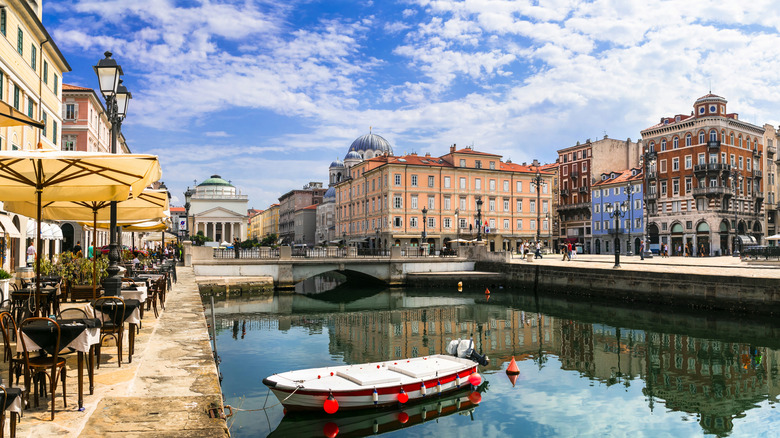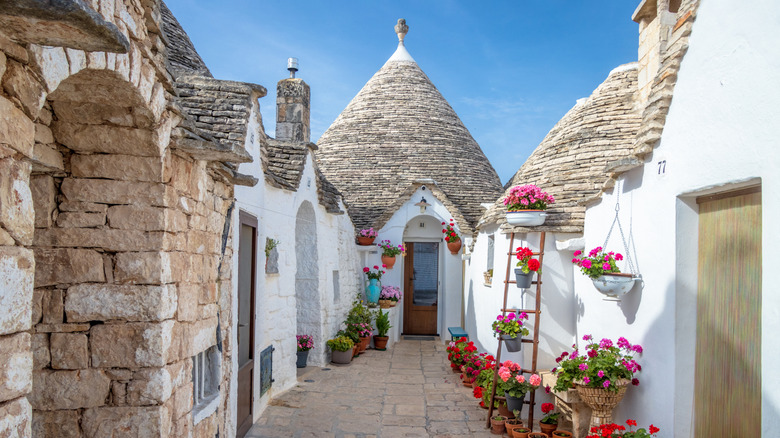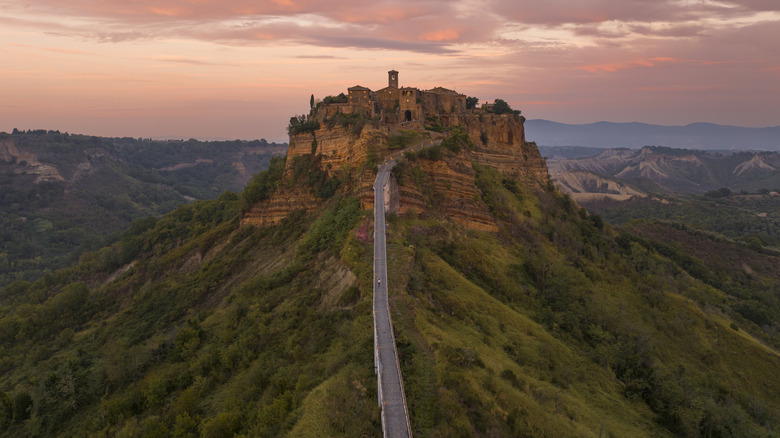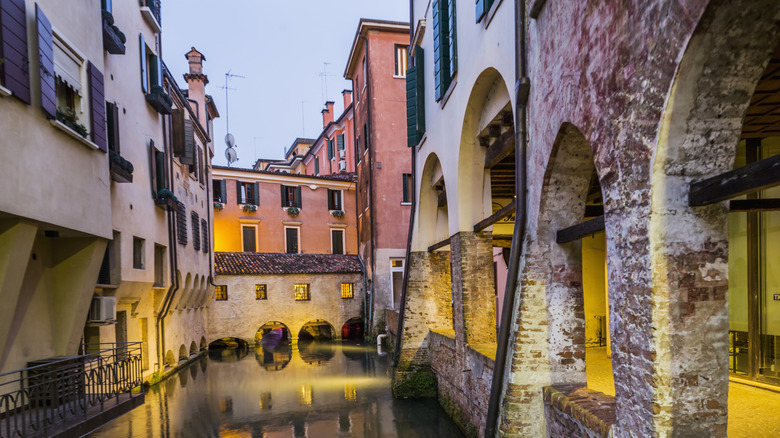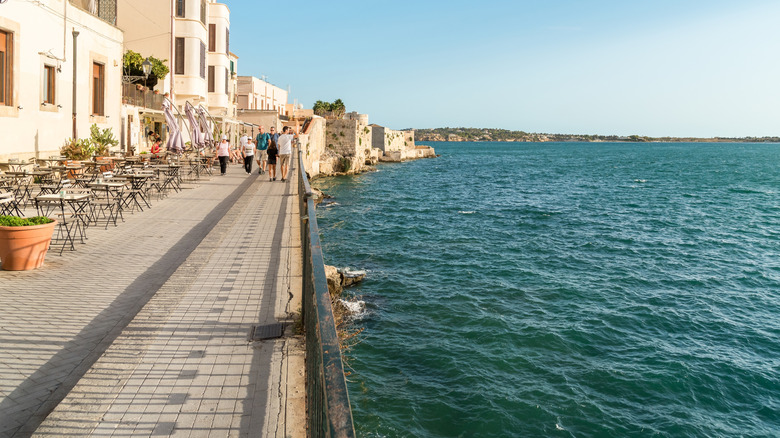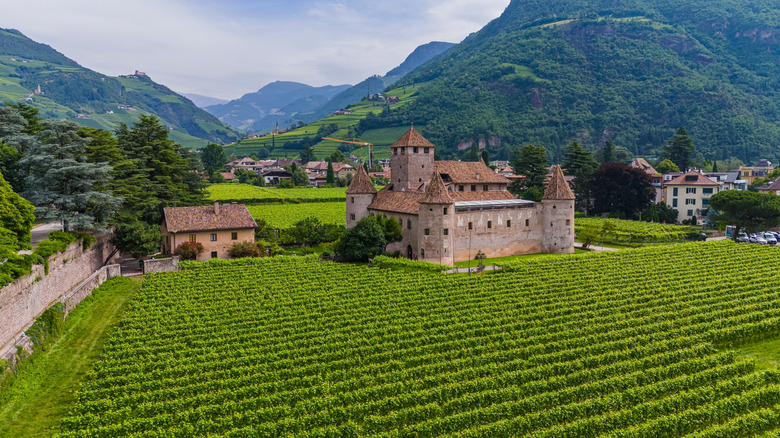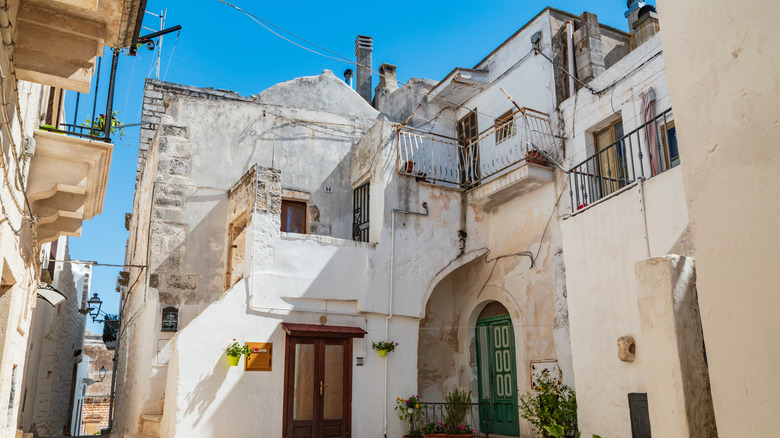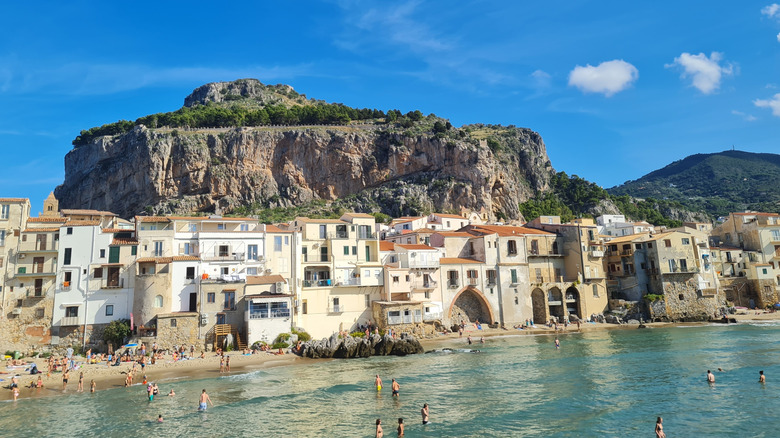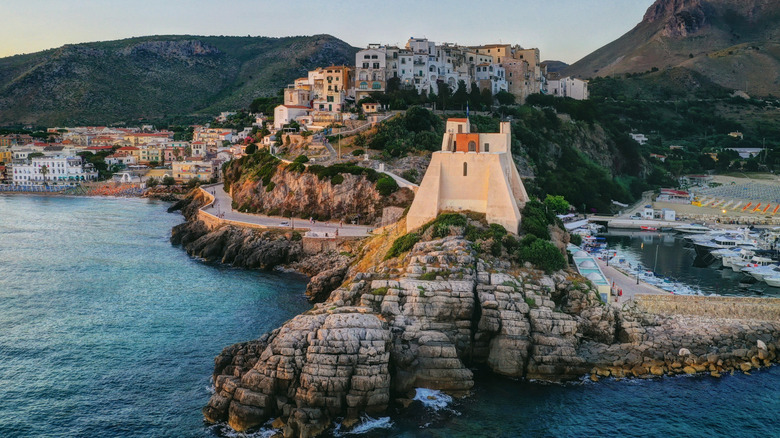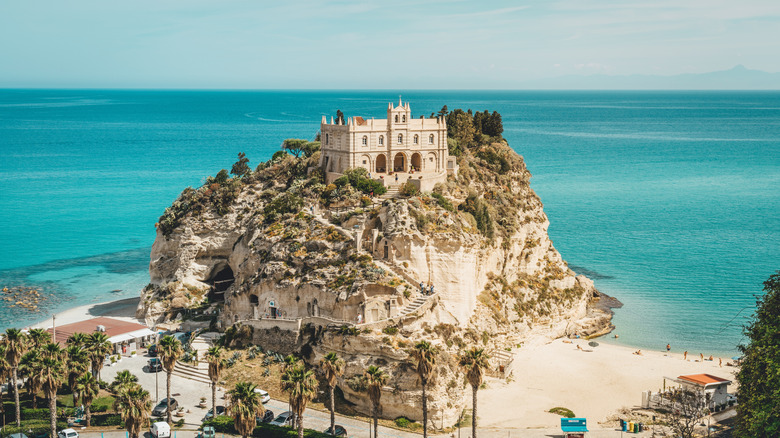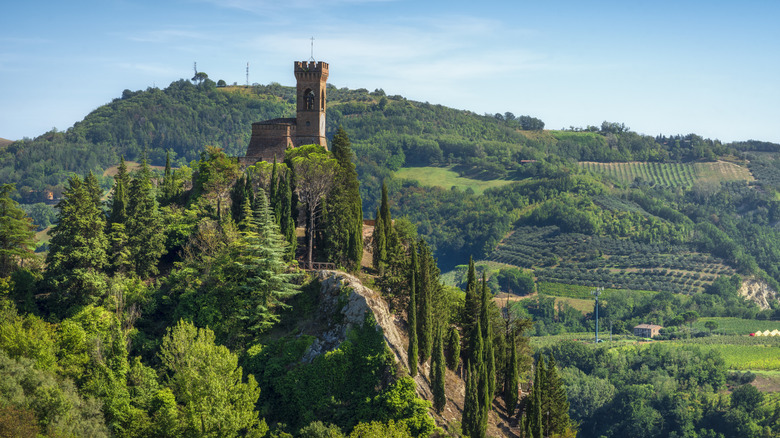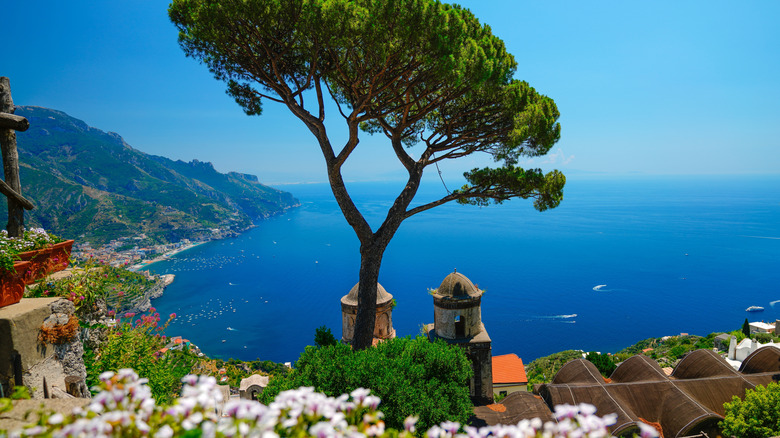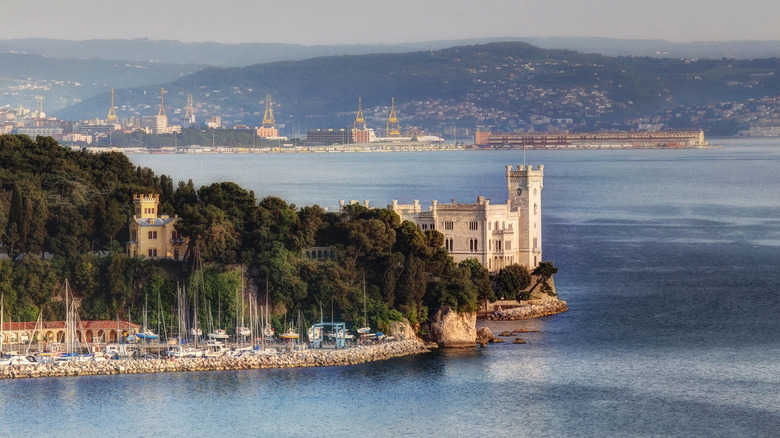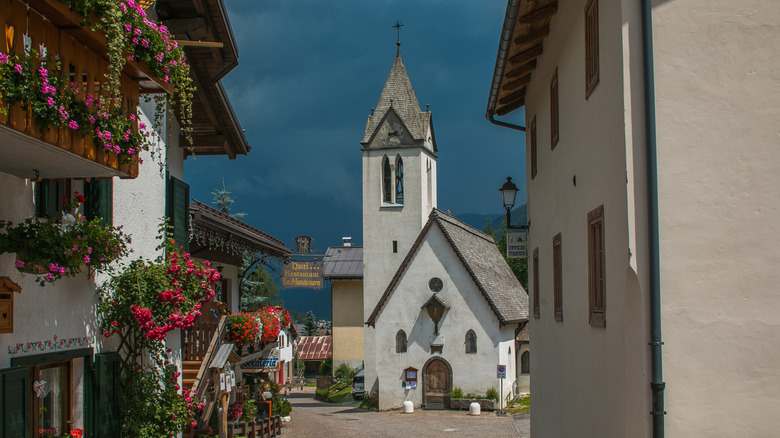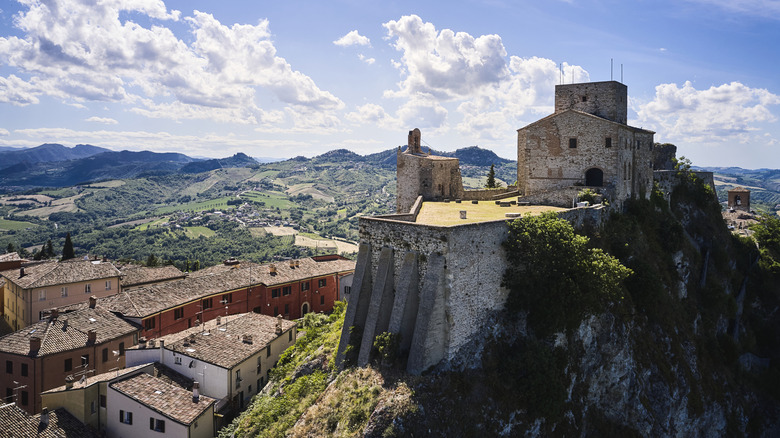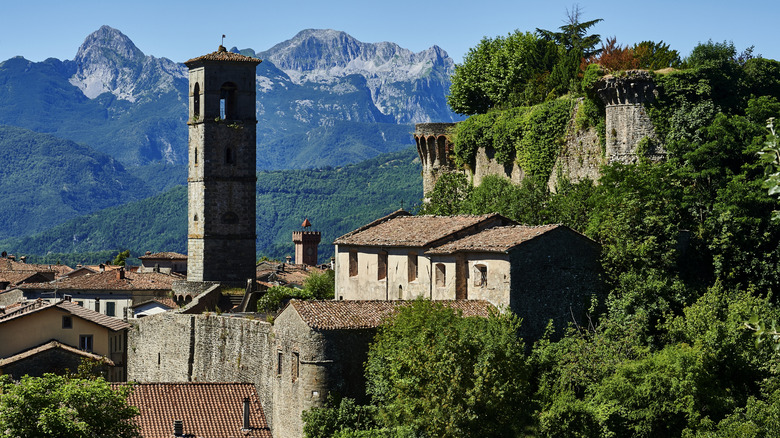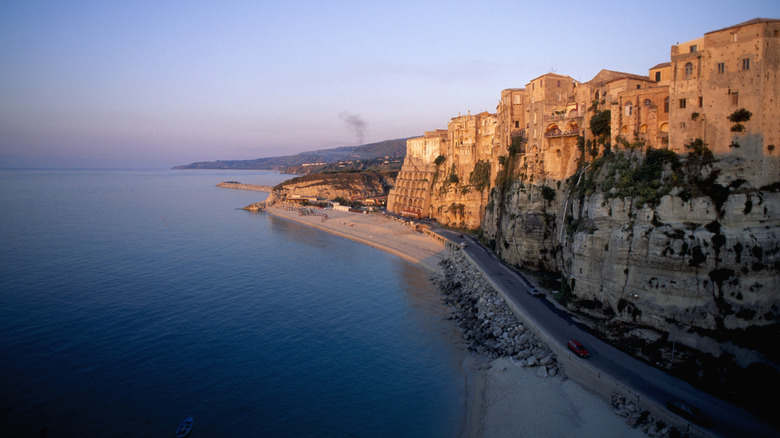Under-The-Radar Towns In Italy For A Beautiful Crowd-Free Vacation, According To Visitors
From its dreamy beach towns and fascinating history to some of the world's best art and out-of-this-world food, there are many reasons why Italy tops bucket lists worldwide. However, as beautiful and enriching as Italy is, there's one significant downside to consider: it is really popular. Sipping a coffee at the oldest cafe in Italy (in Venice) or strolling down the photogenic streets of Florence gets a lot less appealing when you are constantly pushing your way through crowds.
Of course, this doesn't have to be the case. The good news is that your dream Italy trip is still more than possible. All you must do is turn to the many under-the-radar options scattered throughout the country. We've rounded up some of the very best underrated towns in Italy, from beachside gems to quaint towns brimming with history. We've relied on the experiences of other travelers to verify that these towns are both worth visiting and generally uncrowded, mainly through Tripadvisor reviews and travel blogs.
Alberobello, Puglia
Dotted with unique cone-shaped white buildings known as "trulli (singular; trullo)," Puglia's Alberobello is a picturesque town you can't miss. Declared a UNESCO World Heritage site back in the '90s, this scenic town is full of history and beauty waiting around every corner. Of the 1,500-or-so preserved trulli (some of which date back to the 1500s), most are souvenir shops, restaurants, and accommodations, and you can find the majority of them tucked into the Rione Monti quarter in the city's center.
Be sure to check out a number of the town's viewpoints for some of the best looks at this charming town. The Rione Aia Piccola district is also well worth wandering through. The Trullo Sovrano is the town's largest trullo and is now a museum about the town. Fairytale-esque Alberobello is small but perfectly formed, so you only need a few hours or so here. However, if you want to extend the serenity, there are a number of places to stay within town — you can even stay overnight in a trullo.
Civita di Bagnoregio, Lazio
Once a prosperous town through the Middle Ages and Renaissance, a violent earthquake struck Civita in 1695, forming a dramatic cliff and separating the town from its neighbors. In the centuries that followed, the town's population continued to dwindle as the cliff slowly eroded more and more. Today, the only way in or out is through a footbridge, and this hidden gem is known both as "the Dying City" and "The City in the Sky." Due to its isolated location overlooking a canyon, it's the perfect destination for a crowd-free vacation and a look at an authentic Italian hilltop town that's preserved its medieval style.
And don't worry, despite its nickname, Civita di Bagnoregio is far from dead. Expect to see traditional festivals, gorgeous preserved buildings, and romantic courtyards here. There's also a fifth-century church and a geology museum housed in a former palace. "This was completely out of this world," said one previous visitor on Tripadvisor. "It's just magical, you have basically the town to yourself the whole evening ... I cannot find words."
Treviso, Veneto
If tiramisu and prosecco sound like your ideal Italian getaway, why not go straight to the source? While it may not be proven, the delicious dessert is said to have been invented at a local Treviso restaurant, and the area is also known as "the Production Capital of Prosecco." Food and drinks aside, Treviso is full of charm, and if you're intimidated by the overwhelming crowds in Venice, this town is the perfect alternative. Just 16 miles away from its more famous neighbor, Treviso is characterized by its cobblestone alleyways and canals — particularly the scenic Buranelli Canal — that offer a romantic escape similar to Venice.
Treviso is best explored on foot, and there's plenty to see, from its numerous historic piazzas to its churches. Be sure to pop into Chiesa di Santa Lucia to see the 13th and 14th-century frescoes. Art lovers shouldn't skip a stop at Museo di Santa Caterina, which includes a number of fantastic frescoes, as well as 19th and 20th-century works.
Ortigia, Sicily
The historic center of Syracuse (or "Siracusa," in Italian), Ortigia is a stunning island escape steeped in history. Located on an island off Sicily's eastern coast, Ortigia is perfect for meandering through its quiet streets and admiring its whitewashed buildings. It is a tiny island that is easy to explore completely on foot, and it is connected to the mainland by two bridges.
A highlight in Ortigia is its market, which runs Mondays through Saturdays and is a great place to grab a meal and a souvenir (or three). The town is packed with Baroque architecture and historic sites, such as the Cathedral of Ortigia, which was built over the fifth-century Temple of Athena. While technically outside of Ortigia, don't skip a visit to the Neapolis Archeological Park, a UNESCO World Heritage site home to Greek and Roman ruins. Don't forget to indulge in lots of Sicilian cuisine while here, from spectacular seafood and out-of-this-world wine to Ortigia's signature appreciation of pistachio, which can be found in everything from pastries to pesto.
Bolzano, Trentino-Alto Adige
Known as the gateway to the Dolomites (a breathtaking mountain range in the Italian Eastern Alps), Bolzano is a city more than worth an addition to your Italy bucket list. If hiking or skiing across awe-inspiring landscapes calls to you, or even just driving across a scenic road recommended by Rick Steves, this destination is a must. Besides its easy access to the Dolomites, Bolzano has plenty to offer tourists.
The South Tyrol Museum of Archaeology is a must, particularly to see Ötzi, a mummy allegedly older than the Egyptian pyramids. Wander around the town's historic center, home to Italy's largest Christmas market during the festive season. You can also find the region's largest Gothic church, which was first constructed in the 12th century. While in Bolzano, don't skip a stop at its very own fairytale-like hidden castle, Runkelstein Castle, a 13th-century castle known for housing the largest visitable collection of secular medieval frescos on the continent. If you're a wine lover, you'll be pleased to know that Bolzano is surrounded by over 700 acres of vineyards.
Ceglie Messapica, Puglia
This picturesque spot in the Brindisi province is one of Puglia's oldest towns, and when we say "old," we mean old. We're talking many centuries before the beginning of the Common Era, that level of old. Over the centuries, Ceglie Messapica was a key trading center for the ancient tribe (the Messapi), as well as a Roman colony and military post. Today, Ceglie Messapica is a vastly overlooked Italian village packed with history, beauty, and delicious food on practically every corner. The historic center is a gorgeous area filled with whitewashed buildings, and the excellent 13th-century Castle of Ceglie Messapica holds an archaeological museum and municipal library. For stunning Baroque architecture and art, visit the Church of San Giovanni Battista.
Foodies will also find plenty to love here, as the town has a rich culinary tradition. It has even won some accolades in recent decades, especially regarding its desserts and baked goods. You'll find that many restaurants have been in families for generations, utilizing historic techniques and prioritizing local ingredients — so you'll know that you're in for a treat.
Cefalù, Sicily
It's definitely a challenge to narrow down Italy's prettiest destinations, but Cefalù is a worthy name on the list. A cheaper, calmer alternative to the Amalfi Coast, this medieval seaside city is perfect for nature lovers and culture seekers, with gorgeous beaches, historic sites, and the magnificent Madonie Natural Park right at your fingertips. Its UNESCO-listed Norman cathedral is a highlight, thanks to its gorgeous design and impressive mosaics, as is hiking up La Rocca, which leads to a castle and ruins of the Temple of Diana.
Simply wandering around Cefalù's historic streets is also more than worth some time. Don't miss stopping at the Medieval wash-house, which now acts as a beautiful setting for art exhibitions. The Museo Mandralisca is also a treasure trove of art and archaeology, the lifelong collection of items belonging to Baron Enrico Pirajno, who occupied the space in the 19th century.
Sperlonga, Lazio
This under-the-radar town just a short train ride away from Rome is full of charm and devoid of crowds. Sperlonga's old town is characterized by whitewashed buildings, narrow alleyways, and jaw-dropping sea views. Regarding sightseeing, Sperlonga's must-see landmarks include the ruins of Emperor Tiberius's Palace, which dates back to his reign from A.D. 14 to 37, and the accompanying archaeological museum, which houses numerous ancient sculptures. Visitors can also consider 800-year-old frescoes in the 12th-century Chiesa Di Santa Maria, which also opens occasionally for cultural events.
Tucked between Rome and Naples, Spelonga is also home to a spectacular food scene, with pizza and seafood galore. Be sure to try tiella, a regional delicacy of fresh pasta stuffed with delicious fillings like seafood or eggplant. Sperlonga's beach is also ideal for sunbathing, with clean, shallow waters and a relaxing ambiance. Sperlona is a fantastic choice for a day trip escape from the hustle and bustle of the Italian capital, although don't be shocked to find yourself making plans to stay forever.
Tropea, Calabria
For some reason, the Calabria region manages to stay under the tourist radar. Long may that continue, as Tropea — a strikingly beautiful Italian beach town on Calabria's western coast — is a true hidden gem. Known as "the Jewel in the Crown of Calabria," it won't take you long on your visit to understand why that moniker is accurate. Legend says that Tropea was founded by none other than Hercules, and the coastline has been dubbed the "coastline of the Gods." That is quite the billing to live up to, but Tropea does not disappoint.
Tropea's historic core, all flower-adorned balconies and quaint piazzettas, is filled with numerous restaurants, shops, and delicatessens. Historic churches can be found throughout the town, with the most impressive being the 12th-century Norman Cathedral. The fourth-century Santa Maria dell'Isola sanctuary is also well worth the trek required to reach it, as much for its unparalleled views as its fascinating history. Tropea's beaches are also some of the region's best, with clear water and surrounding cliffs.
Brisighella, Emilia-Romagna
This quiet medieval town is virtually unknown to foreign tourists, who are all missing out on its alluring landscapes and romantic ambiance. Surrounded by mountains and vineyards and made up of colorful structures, Brisighella appears straight out of a postcard. The town is ideal for slow travelers, those visitors who aren't seeking a ton of excursions but rather a day of wandering around, taking photos, and indulging in Italian wine and cuisine. The area is lauded for its olive oil, which you can find in a number of varieties. If you are up for some sightseeing, head to La Rocca, where you can find a still-intact 14th-century castle, a 19th-century clocktower, and an 18th-century religious sanctuary.
Further out from town, there's plenty of hiking for more energetic travelers. The Parco Carnè wildlife park is home to trails, a camping area, a museum, as well as a restaurant serving delicious food that accentuates the stellar views. Not far from Brisighella, you can also find thermal baths if you're in need of some extra relaxation.
Ravello, Campania
That's right, you can even find quiet on the popular Amalfi coast. Forget about gorgeous but over-touristed spots like Capri and Positano and head directly to Ravello. This "hidden treasure" on the Amalfi Coast" is just as dazzling but without the overwhelming crowds. Located on a hill overlooking the sea, Ravella has an array of churches, plenty of artisan shops, and a gorgeous historic center. Here, you can see the Duomo di Ravello — its bronze doors date to A.D. 1179. Inside, there are interesting relics and tile mosaics.
Ravello's main attractions include dreamy villas like the medieval-era Villa Rufolo, which incorporates Arabian, Sicilian, and Norman styles and has an elegant garden, and Villa Cimbrone, a hotel with gardens that are open to the public. "This Villa is an absolute must see for anyone visiting the Amalfi Coast," said one past Villa Cimbrone visitor on Tripadvisor. "The views from the Infinity terrace are worth every step."
Trieste, Friuli-Venezia Giulia
Located in the northeast of Italy and bordering Austria and Slovenia, Trieste has a flavor all of its own. Despite its idyllic views and unique cultural blend, the city known as Trst in Slovenia remains criminally overlooked. Small enough for an ideal day trip but with enough to do to occupy you for longer, highlights include the Piazza Unità d'Italia, where you can see the clear architectural influence of the town's former life as part of the Austro-Hungarian Empire. This is reflected in its food, and you can find plenty of restaurants serving up dishes of meat, potatoes, and sauerkraut. You can also find more typical Italian-style spots, especially in the Cavana neighborhood.
Trieste is also home to the ruins of an ancient Roman theater. It dates all the way back to the first and second centuries A.D. and occasionally hosts summertime concerts. Trieste even has its very own canal — known as Canal Grande — and Castello di San Giusto offers both an excursion for history buffs, as well as a fantastic view for those who'd rather skip the history lesson. Surprisingly, Trieste is also considered the coffee capital of Italy, so be sure to try a cup (or three) while here.
Sottoguda, Veneto
If you're looking to ditch the beach and sunburn for some snow-capped mountains instead, then this one's for you. While all of these underrated Italian destinations are undoubtedly striking, Sottoguda — located at the highest peak of the Dolomites— is considered one of the prettiest. Yes, that's right, one of the prettiest destinations in Italy, a country famous for its stunning spots. Situated right by Serrai di Sottoguda Natural Park and Alleghe Lake, Sottoguda is tranquil, nature-filled, and utterly breathtaking. In the winter, its frozen waterfalls are a main attraction, becoming a climbing gym for ice climbers.
Whether you prefer hiking, climbing, or winter sports like skiing or snowboarding, Sottoguda is the perfect adventure destination. Part of its charm is that this Alpine village maintains its rural architecture, and throughout the town you'll see spellbinding "tabièi," or wooden barns. Be sure to check out Sottoguda's church, which goes back to the 15th century, when only 10 families called Sottoguda home.
Verucchio, Emilia-Romagna
This ancient town perched between the ocean and the mountains has the Marecchia River Valley as a backdrop, meaning you're in for more surreal landscapes. Verucchio's real draw is for the history lovers, however. If you're familiar with your Italian history, you may be aware of the Malatesta family, who ruled Rimini during the Middle Ages. The dynasty was actually born in Verucchio, and you can even visit their former fortress, the spectacular Rocca Malatestiana (also known as the Rocca di Verucchio), which operated from the 12th through 16th centuries.
"From the top, the view across Verucchio is beautiful!" said one Tripadvisor reviewer. "Widespread landscape with delightful colours and buildings from long ago. And the castle itself is worth the climb." For even more history, stop at the town's archaeology museum, located in a former monastery and the best place to explore the town's 3,000-year-old roots. You can also pay a visit to the Romanesque Church of Sant'Antonio, which was constructed all the way back in A.D. 990.
Castiglione di Garfagnana, Tuscany
Castiglione di Garfagnana has no shortage of gorgeous views and fascinating history. A walk through this town's historic center will transport you back in time with its winding cobblestone streets, ancient stone buildings, and enchanting plazas. Historic sightseeing includes architectural wonders like the Church of San Pietro, the Palazzo Comunale, and the Rocca di Castiglione, the town's medieval forest and one of the best places for panoramic views of the area.
The town truly embraces its medieval history. Depending on when you visit, you may be able to catch one of its medieval festivals, which may include reenactments, performances, and street markets. Practically hidden away in the woods, this is also a great nature destination in Tuscany, thanks primarily to its proximity to the Apuan Alps and Apennine Mountains. There are a number of fantastic hiking trails that will allow you to take in its jaw-dropping scenery.
Methodology
Italy is full of gorgeous towns to visit, so narrowing down some of its best — that are also the least crowded — was no easy feat. We primarily used travel blogs as well as destination sites to compile our recommendations, ensuring that each town has plenty to offer tourists and is indeed worth visiting. We also utilized Tripadvisor reviews to add further credibility to the collection. That being said, this is Italy we're talking about; you can't go wrong.
